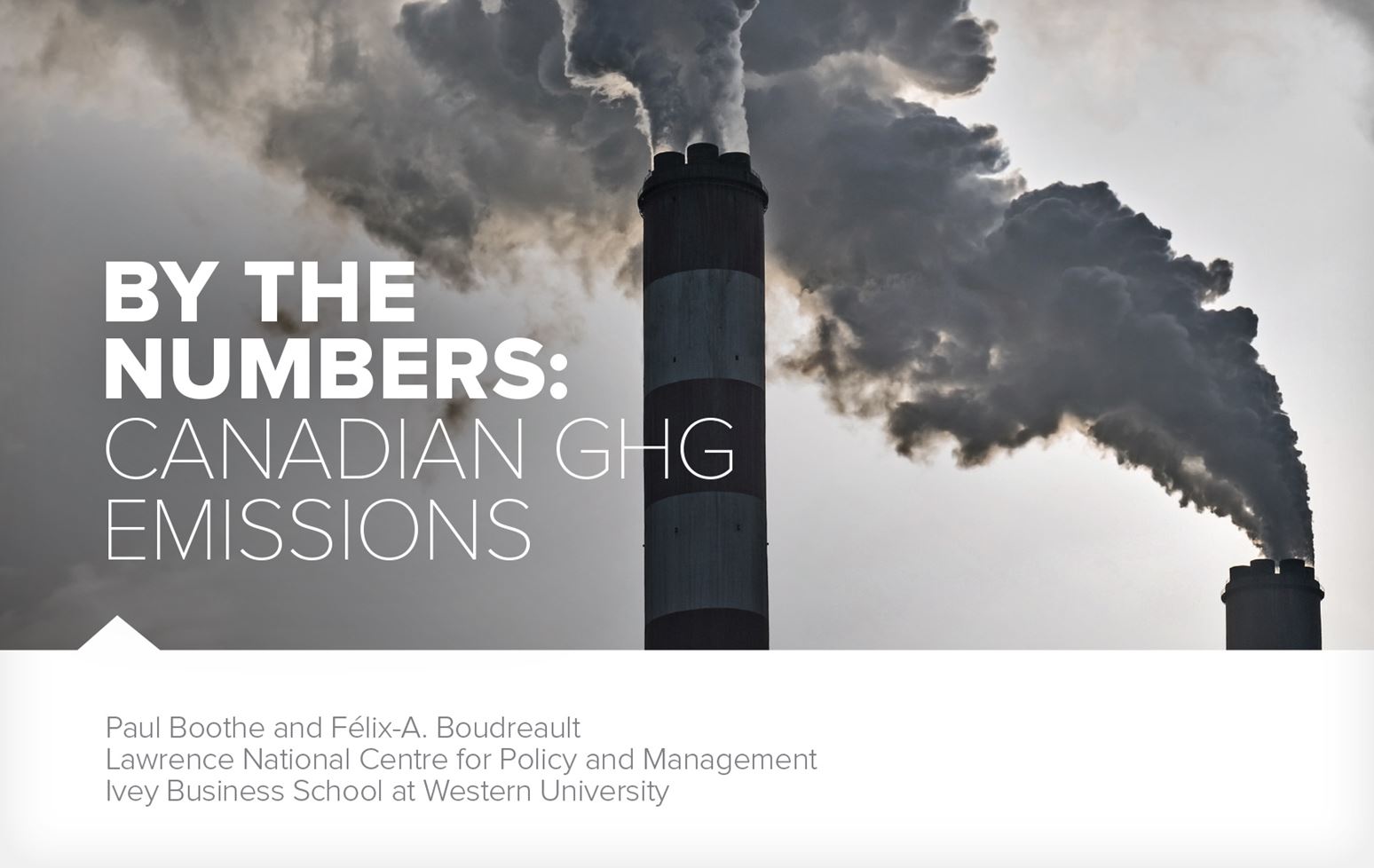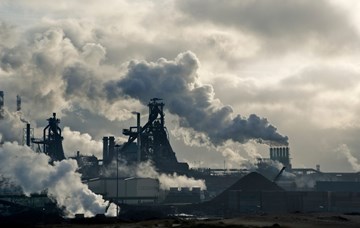LONDON, ONTARIO – January 29, 2016 – As representatives from the federal and provincial governments gather to iron out next steps in Canada’s climate change plan the Ivey Business School’s Lawrence National Centre for Policy and Management has developed a summary of the basic facts to get the discussion rolling.
Basic Facts:
- Canada’s greenhouse gas (GHG) emissions currently represent about 1.6 percent of the global total. Canada is among the top 10 global emitters and one of the largest developed world per capita emitter of GHGs.
- Canadian federal governments have committed to reduce annual GHG emissions from 726 megatonnes (Mt) currently to 622 Mt in 2020 and 525 Mt in 2030.
- Within Canada, GHG emissions vary widely across provinces ranging from 267 Mt in Alberta to 1.8 Mt in PEI in 2013.
- In per capita terms, Saskatchewan and Alberta are among the developed world’s largest emitters at 68 and 67 tonnes respectively. Per capita emissions in BC, Ontario and Quebec are in the 10-14 tonne range, comparable to best performers in Western Europe.
- For provinces with announced GHG emission targets, the level of ambition varies widely. Alberta plans to increase emissions through 2020 and return to today’s levels by 2030, while Ontario, Quebec and Manitoba plan to reduce emissions by 56, 27 and 8 Mt respectively.
- Even if all provincial targets were fully achieved, Canada would still need to reduce GHG emissions by an additional 45 Mt in 2020 and 55 Mt in 2030 to meet its international commitments.
“These facts define tomorrow’s starting point. What they should not do is lessen ministers’ resolve to tackle the issue of GHG emissions,” says Paul Boothe, Director of the Lawrence National Centre for Policy and Management. “Climate change is happening now. It is already painfully evident in Canada’s North. While we have a big challenge ahead, we also have the ingenuity we need to meet it. What’s been missing is the collective willingness of political leaders to take real action. Hopefully, tomorrow’s meeting will show the commitment to real action that we need.”
The full report titled By the Numbers: Canadian GHG Emissions can be found at this link:
www.ivey.uwo.ca/media/2112500/4462-ghg-emissions-report-v03f.pdf
Media Contact:
Ivan Langrish, Senior Manager, Media Strategy
Ivey Business School, Western University
ilangrish@ivey.ca
416-203-0664
About the Lawrence National Centre for Policy and Management
The Lawrence National Centre for Policy and Management bridges business strategy and government policy to contribute to Canada’s global competitiveness. The Centre educates future business leaders in public policy and government leaders in business strategy and conducts leading-edge research on major issues that involve business-government coordination. www.ivey.uwo.ca/lawrencecentre
About the Ivey Business School, Western University
The Ivey Business School (www.ivey.ca) at Western University is Canada’s leading provider of relevant, innovative and comprehensive business education. Drawing on extensive research and business experience, Ivey faculty provide the best classroom experience, equipping graduates with the skills and capabilities they need to tackle the leadership challenges in today’s complex business world. Ivey offers world-renowned undergraduate and graduate degree programs as well as Executive Education at campuses in London (Ontario), Toronto and Hong Kong.



